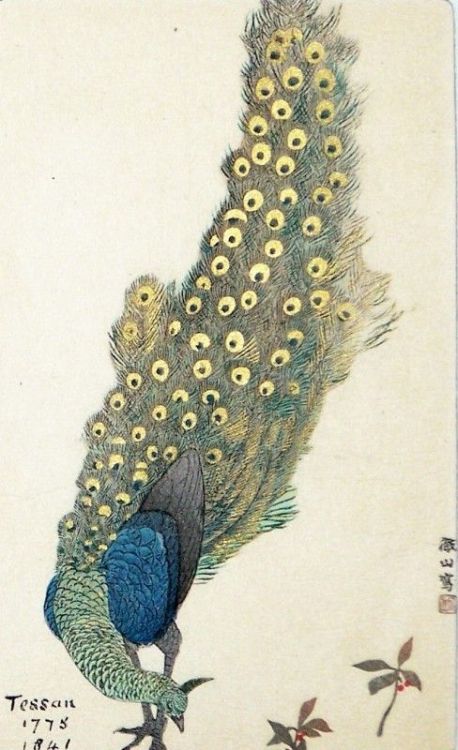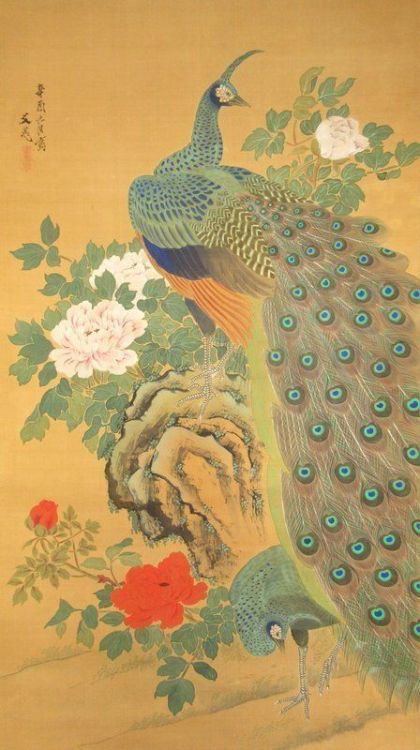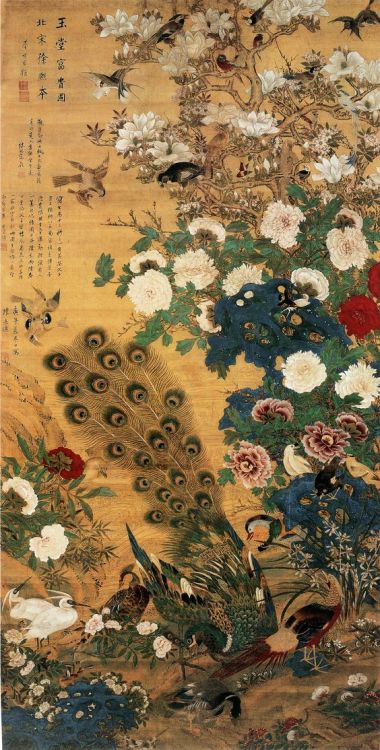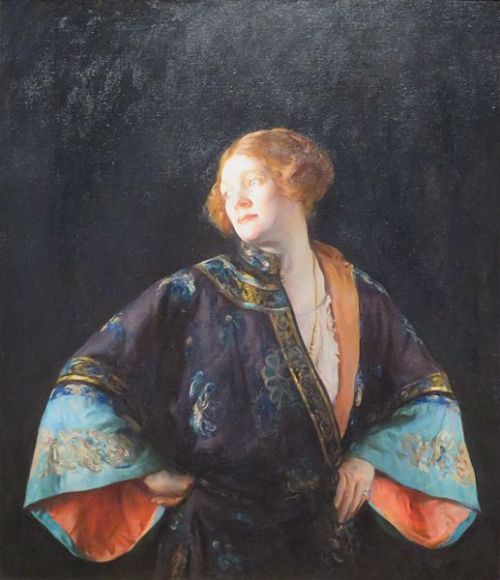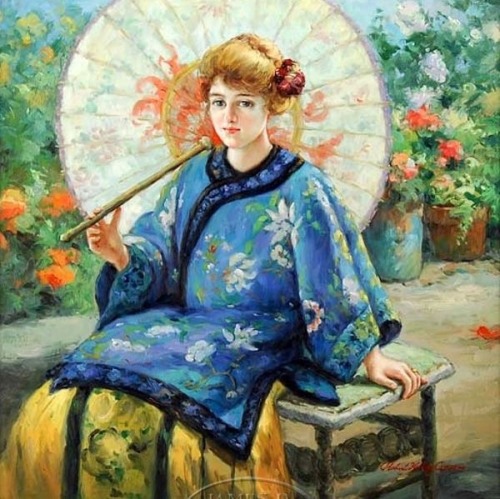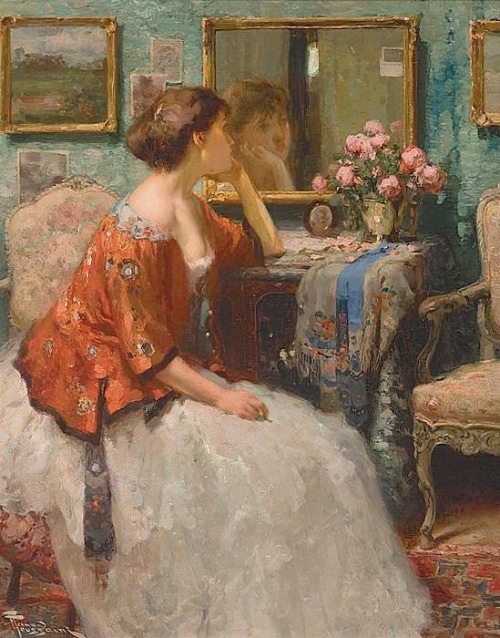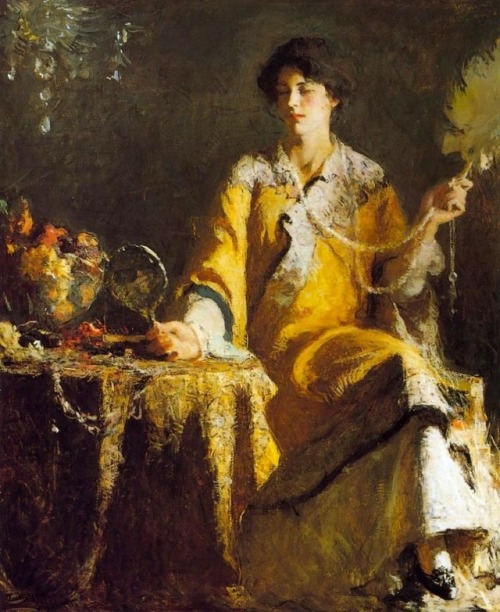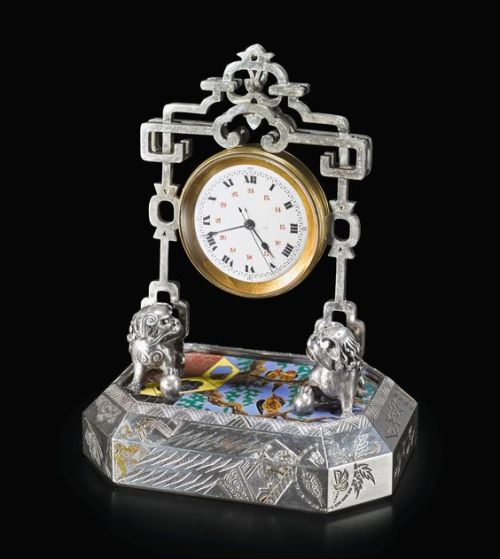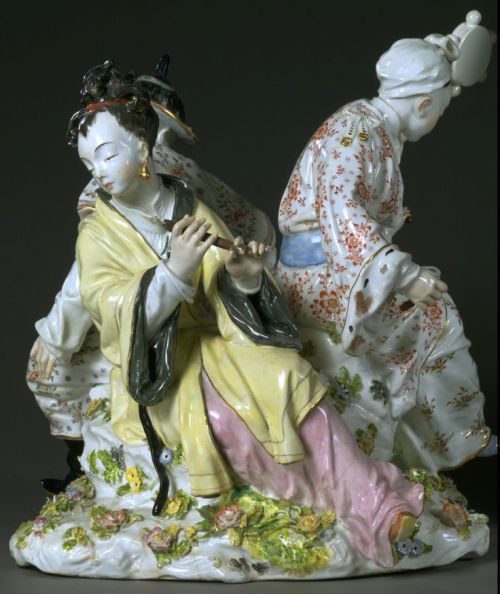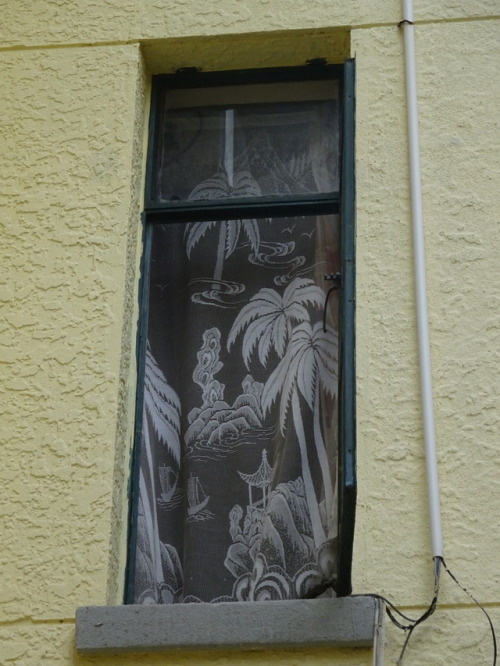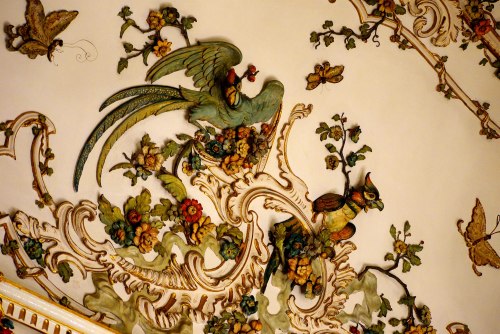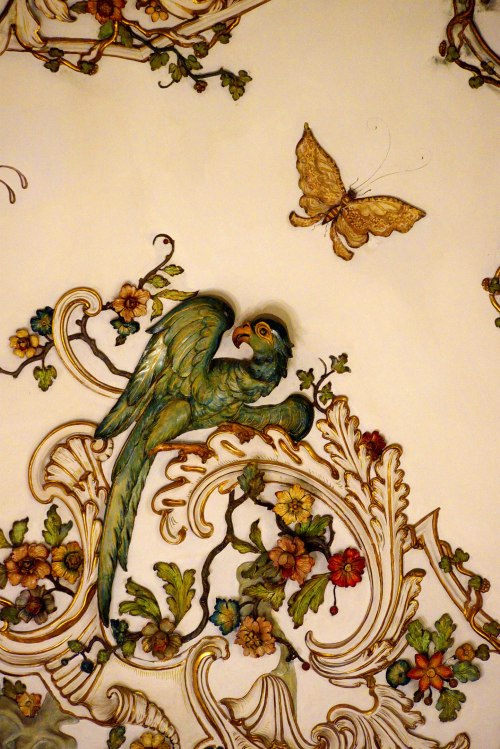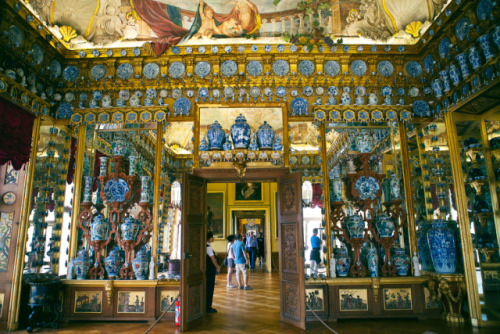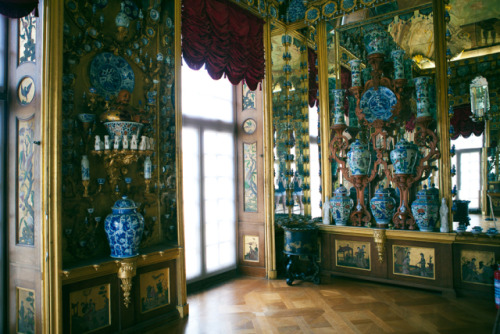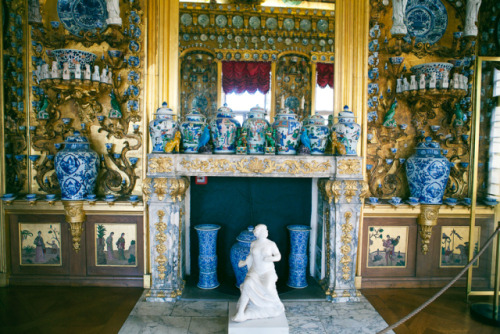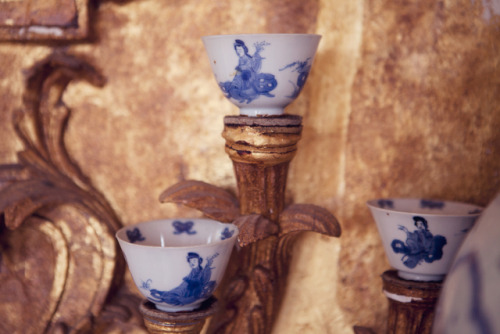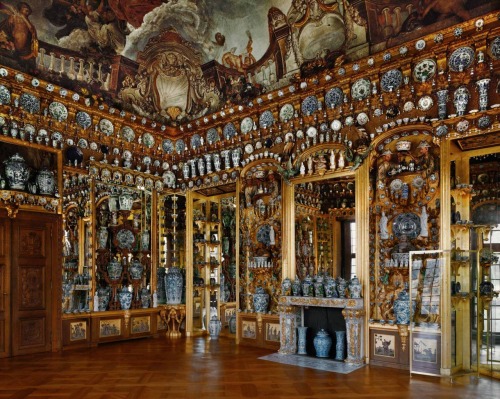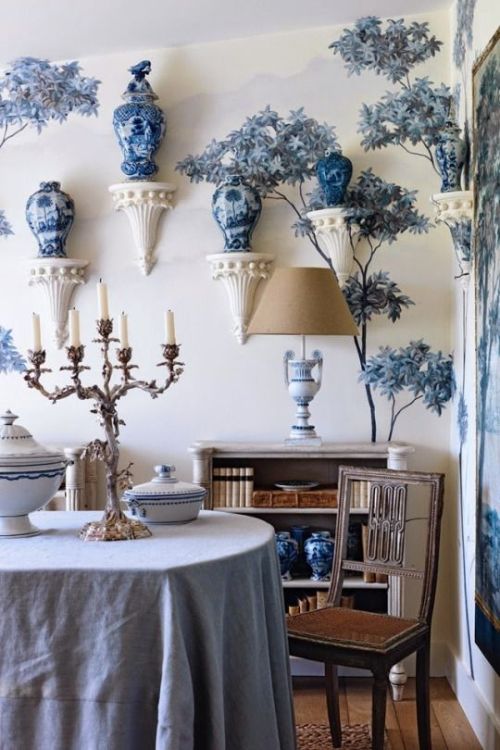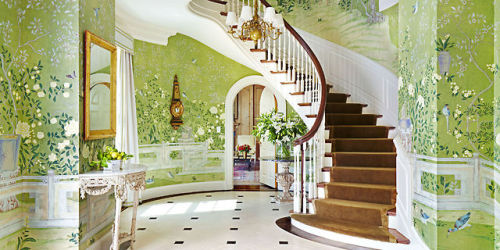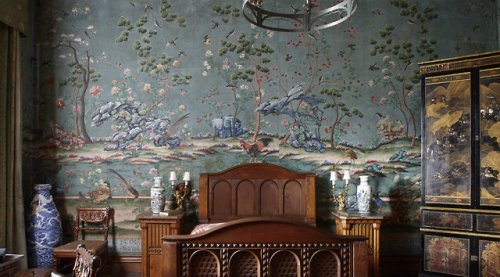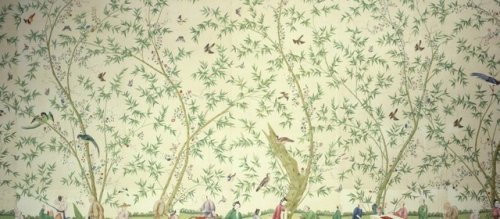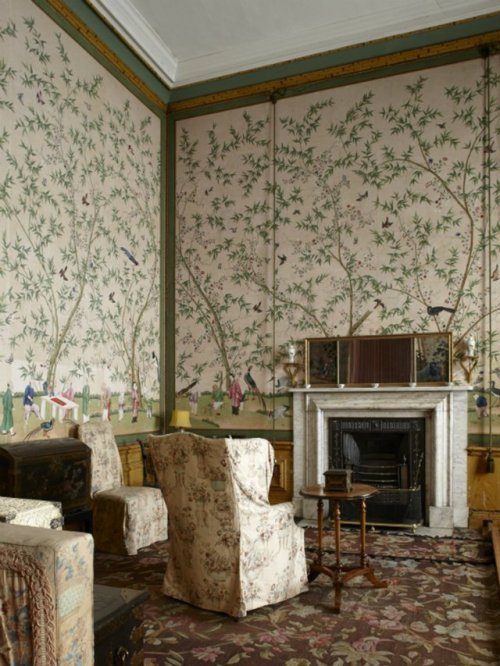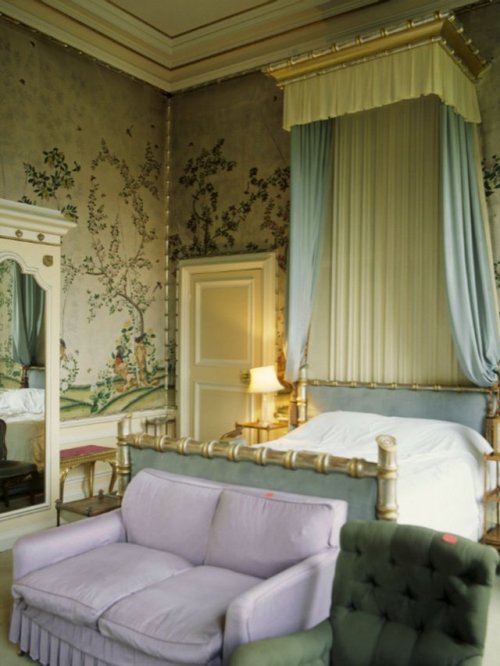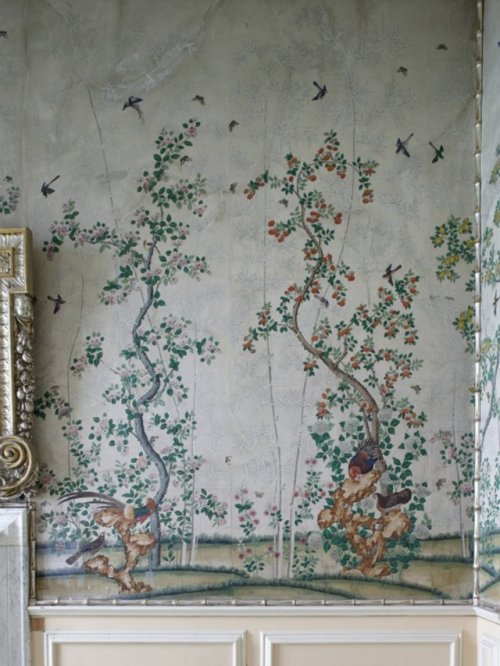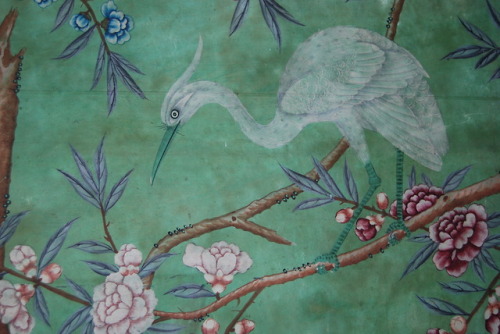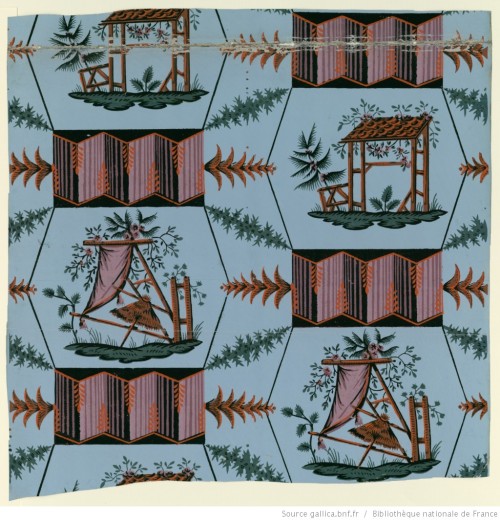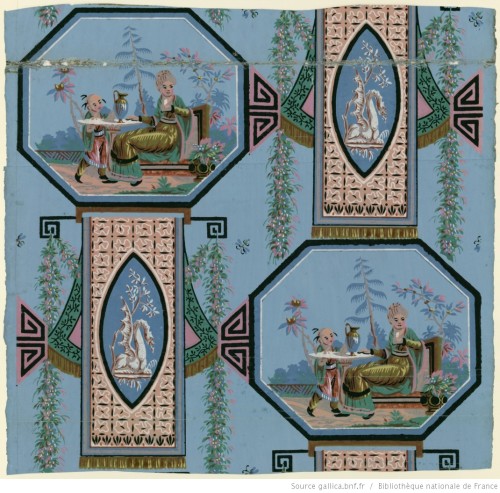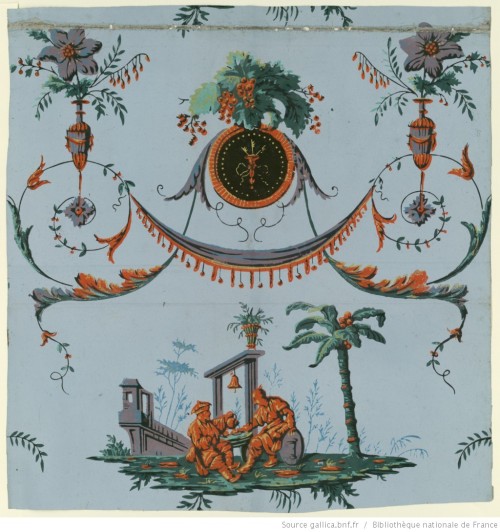#chinoiserie
Peacocks
1. A Peacock by Mori Tessan (tetsuzan) (1775-1841)
2. Lin Kui-Ling, Peacock
3. Japanese Scroll Painting of Peacocks Attributed to Tani Bunchō
4. Traditional Peacock Painting (Chinese) 17th Century
5. Peacock and Peonies, Maruyama Ōkyo 円山応挙 1768
6. Ohara Koson, Peafowls
7. Peacock and Peahen (18th c.)
8. Shoson- “A Peacock resting in a tree branch (1877-1945)
9. Early 20th Century, Peacock on a rock, Japanese woodblock
10. Landscape with Peacock and Peahen, Kyoto Kano School 17th Century
Post link
Philip Treacy for Alexander Mcqueen | ‘Chinese Garden’ | 2005⠀
———⠀
Treacy’s work, for all its originality, is also rooted in his deep knowledge of the history of art, fashion, and design. This Chinese garden refers to the popularity of Chinoiserie in the eighteenth century and to the 1770s fashion for elaborate landscapes constructed in the topography of a woman’s heroically sculpted hair. For his high-style coronet, Treacy has cannibalized the decorative shadowboxes of intricately cut-worked cork purchased in Asia and rearranged them into his own Orientalist fantasy. (via The Metropolitan Museum of Art)⠀
⠀
(@ accession no. 2007.307)⠀
———⠀
#PhilipTreacy #AlexanderMcQueen #IsabellaBlow #GemmaWard #McQueen #headwear #hat #millinery #milliner #art #fashion #sculpture #couture #chinoiserie #style #beauty #design #dress #mode #moda
⠀
https://www.instagram.com/p/B7g7DZrACWJ/?igshid=1akqj4gjrh5b3
Post link
chinoiserie
Chinoiserie originated in France during the 18th century and shares many stylistic similarities wth the undulatingly fluid and organic rococo movement. One of the most obvious and practical parallels is that it encompassed many mediums, from interior design, furniture, garden follies to painting textiles and ceramics. Indeed chinoiserie was everywhere in Europe and was of course drenched with colonial symbolism.
As a concept this style is completely entwined with orientalist principles. It is inspired by ‘the orient’ yet makes no geographic or artistic distinctions between influences and countries. What emerges is a strange idea of China which draws upon imagery from Turkey, India, Egypt and Japan, creating an elaborate exotic fantasy, more a depiction of the designers own imagination than anything resembling reality.
The truth was outside academia in the superficial world of fashion, there was little interest in really exploring and understanding a different culture, what really mattered was following the latest trend. With the influx of Asian products like silk, porcelain and tea, via the East India Company, goods from the 'orient’ were the new symbol of power and wealth. With this mania Europe’s own cultural landscape changed and with it its visual identity.
Post link

FASHION IN ART
Hearts are Trumps - Detail (1872) by John Everett Millais
Tate Britain, London
The Long Gallery at the Royal Pavilion of Brighton. The walls of the Long Gallery were painted with a chinoiserie design of trees, rocks, shrubs and birds against a pink background. The present scheme is a 1950s reconstruction of the original, intended to evoke a bamboo grove. Full of exotic furnishings and Chinese objets d’art, the Long Gallery uses clever decorative techniques such as iron cast to imitate bamboo, furniture in beech simulating bamboo, and carefully placed mirrors.
Source:Brighton Museums
Post link
Illustration of the Chinese Gallery, or Long Gallery at the Royal Pavilion of Brighton that was designed by John Nash (1752-1835). This was a bound print printed by T. Sutherland, Frederic Lewis, Robert Havel Jr., and M. Dubourg. Published by J. B. Nichols and Son, London, England, 1838, 1820. Identifier: 1951-128-1-46
Source:Cooper Hewitt
Post link
A clip from the BBC Four documentary, “Brighton Pavilion’s secrets - Art, Passion and Power: The Story of the Royal Collection,” in which presenter Andrew Graham-Dixon explores the secrets of the Royal Pavilion in Brighton.
The “Porcelain Chamber” in Charlottenburg Palace, Berlin, completed in 1706. The greater availability of Chinese and Japanese porcelain from the mid-1600s onward increased interest in this material. Nobles throughout Europe collected porcelain and created “China cabinets"—rooms completely decorated with ceramics displayed on brackets, mantelpieces, shelves, and sometimes even on the floor.
Post link
The blue-and-white scheme of this dining room belonging to interior designers Philip Vergeylen and Paolo Moschino is based on the eighteenth-century painted French screen that hangs on the wall. The hand-painted blue design was created with the artist, Dawn Reader. On the walls are blue-and-white Tournai porcelainware.
Sources:House & Garden,Nicholas Haslam
Post link
The interior of a large 1930’s Georgian house which sits on 26 acres in Locust Valley, Long Island, New York, was designed by Christopher Maya for a Chinese-American family’s first home in the USA. Here, the foyer is decorated with a green, hand-painted Chinoiserie wallpaper from du Gournay.
via:The Foo Dog blog
Post link
Hand-painting a de Gournay chinoiserie wallpaper
The wallpaper in the Lower India Room at Penrhyn castle, hung in the early 1830s and contrasting with the neo-Norman features and furnishings
Source:National Trust Collections
Post link
The Chinese wallpapers in the Chinese Bedroom and Bamboo Bedroom at Belton House.
Source:National Trust
Post link
The hand-painted Chinese wallpaper in the State Bedroom at Erddig
Source:National Trust - Treasure Hunt blog
Post link
Late 18th and early 19th century Chinoserie wallpapers from manufacturers in France.
Image 1: Manufacture Chapillon, 1800. Papier à motif répétitif en arabesque à un chemin alternant une chinoiserie à deux personnages prenant le thé et des volutes de feuilles d'acanthe. Identifier: ark:/12148/btv1b6900153b
Image 2: Papier peint à motif répétitif de Pauquet (Paris?), 1799. Identifier: ark:/12148/btv1b6901072n
Image 3: Papier peint de Hartmann Risler et Cie (Rixheim), 1801. Identifier: ark:/12148/btv1b69012122
Image 4: Manufacture Chapillon, 1801. Papier à motif répétitif à deux chemins, en quinconce, de carreaux ornés de motif en paravent et de deux motifs de chinoiserie. Identifier:ark:/12148/btv1b6900158d
Image 5: Papier peint de Jacquemart et Bénard (Paris), 1799. Identifier: ark:/12148/btv1b6900415p
Image 6: Papier peint de Zuber et Compagnie (Rixheim), 1802. Identifier: ark:/12148/btv1b6901231d
Image 7: Manufacture R. Bon, 1799. Papier à motif répétitif à deux chemins : scènes avec deux personnages. Identifier:ark:/12148/btv1b69000211
Image 8: Papier peint à motif répétitif de Hartmann Risler et Cie (Rixheim). Date: 1901. Identifer: ark:/12148/btv1b6901342j
Source: Bibliothèque nationale de France- 1,2,3,4,5,6, 7,8
Post link

